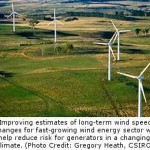 Bonn – The third meeting of the Transitional Committee tasked with designing the UNFCCC’s new Green Climate Fund (11-13 September) concluded Tuesday in Geneva, with solid progress made on the design of the Fund. Next to advances on the nuts and bolts of how the Green Climate Fund will function, this includes a broad agreement on the importance of private sector engagement.
Bonn – The third meeting of the Transitional Committee tasked with designing the UNFCCC’s new Green Climate Fund (11-13 September) concluded Tuesday in Geneva, with solid progress made on the design of the Fund. Next to advances on the nuts and bolts of how the Green Climate Fund will function, this includes a broad agreement on the importance of private sector engagement.
Speaking from Bonn, Germany, UNFCCC Executive Secretary Christiana Figueres said, “Clearly, there is ambition on the part of governments to create a fund that will reach a scale that is sufficient to put the economic development of their countries onto a low-carbon and climate resilient path. Governments also want the Fund to be country-driven and integrated into national development planning processes. And they are keen for Green Climate Fund resources to be long-term to allow for the economic transformation necessary to address climate change.”
“The Transitional Committee of the Fund is now fully on track to conclude the design of the Fund for the approval by UNFCCC’s Conference of the Parties in Durban,” the UN’s top climate change official added.
In Cancun, Mexico, at the end of 2010, governments agreed to establish the Green Climate Fund as a central tool to finance climate change action, both adaptation and mitigation, in developing countries. The Green Climate Fund is to support projects, programmes and policies in developing countries.
Governments meeting in Cancun entrusted the Transitional Committee with the design of the operational aspects of the Fund, to be presented to the UN Climate Change Conference in Durban (28 November to 9 December 2011). After it has been operationalized in Durban, the Fund is to be governed by a Board, comprising 24 members, as well as alternate members, with equal developing and developed country representation.
The Geneva meeting was preceded by a workshop on the role of the Green Climate Fund in fostering transformational change, engaging civil society and leveraging the private sector, attended by representatives of banks, financial institutions and industry and civil society organizations from both developed and developing countries.
“The workshop and the interaction with private sector representatives have helped to raise the level of understanding of the needs of all stakeholders. This is critical because with this new level of understanding, targeted systems can be put in place to engage the private sector, which in turn is very important to enable the Green Climate Fund to have truly transformational impacts,” Ms. Figueres said.
The establishment of the Green Climate Fund is to play a pivotal role in the successful operation of two other major new institutions agreed in Cancun to speed up international action on climate change – a Technology Mechanism for both adaptation and mitigation technologies and an Adaptation Framework. Both institutions are set to become fully operational in 2012.
“The speedy operationalization of the Green Climate Fund will be especially important, not least to vulnerable developing countries, given that a significant share of new multilateral funding for adaptation is to flow through the Fund,” Ms. Figueres said. “So for all the necessary cog-wheels to interlink and produce real traction, the conference in Durban needs to detail how funding arrangements will link up with the new adaptation and technology institutions in time for their full operationalization in 2012,” she added.
A final meeting of the Transitional Committee for the design of the Green Climate Fund is scheduled for 16-17 October in Cape Town.
 About the UNFCCC
About the UNFCCC
With 195 Parties, the United Nations Framework Convention on Climate Change (UNFCCC) has near universal membership and is the parent treaty of the 1997 Kyoto Protocol. The Kyoto Protocol has been ratified by 192 of the UNFCCC Parties. Under the Protocol, 37 States, consisting of highly industrialized countries and countries undergoing the process of transition to a market economy, have legally binding emission limitation and reduction commitments. The ultimate objective of both treaties is to stabilize greenhouse gas concentrations in the atmosphere at a level that will prevent dangerous human interference with the climate system. For more information, visit http://unfccc.int.
Source: UNFCCC.













